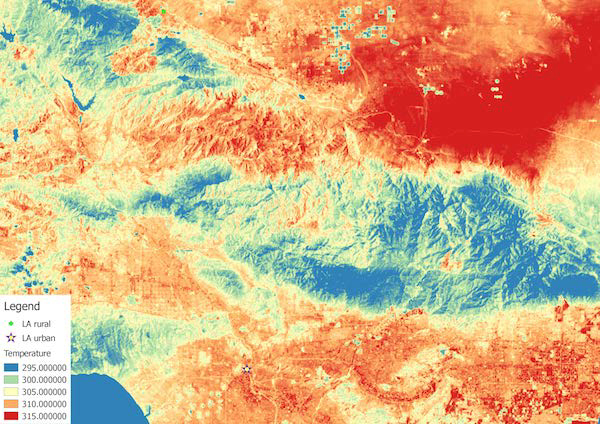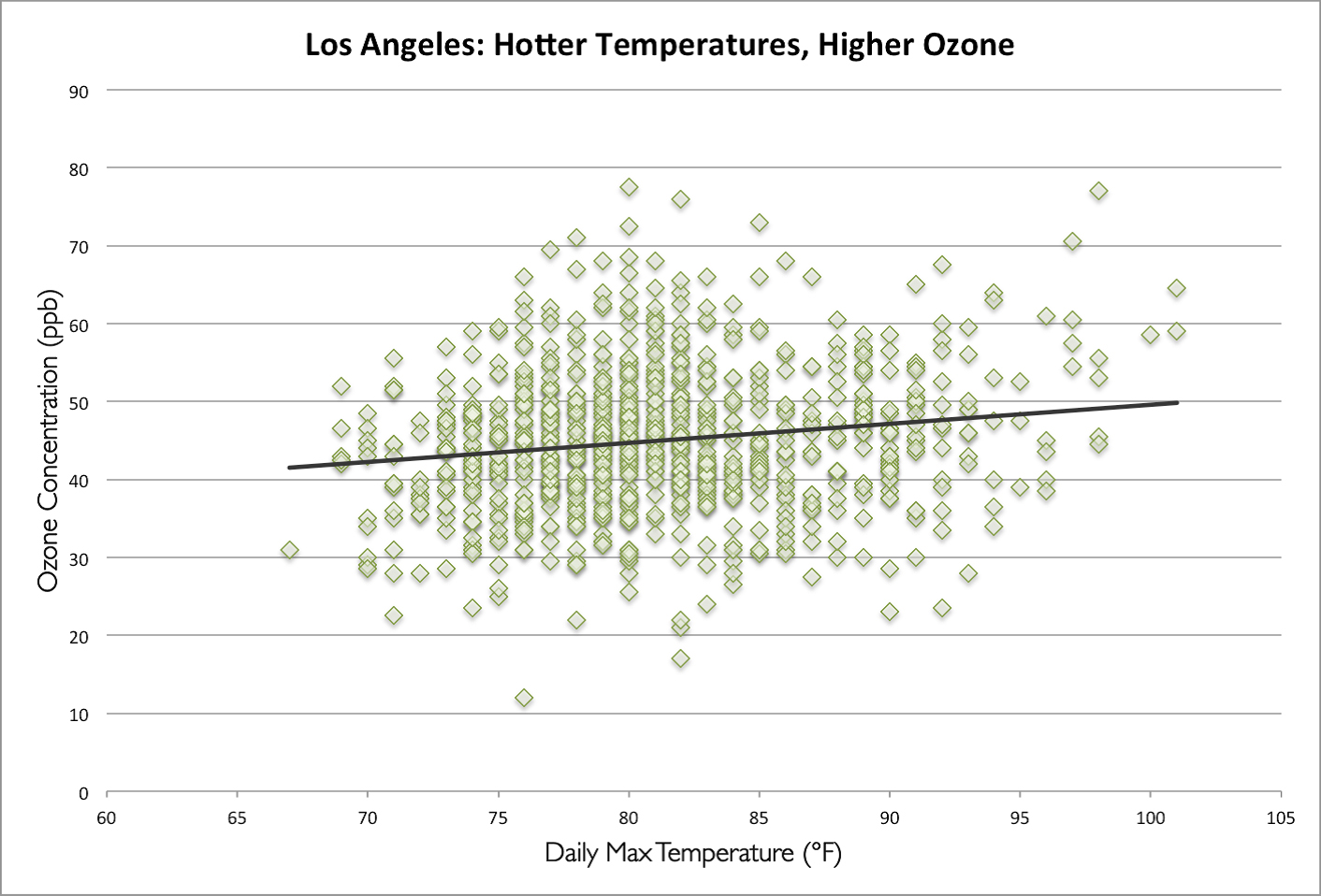Rising temperatures threaten public health and are tied to higher levels of ozone air pollution. The following is a Press Release by Climate Central:
Urbanization and climate change are teaming up, turning up the heat in cities faster than rural areas. These hotter urban temperatures raise the risk for dangerous ozone air pollution, according to a new report, “Summer in the City,” from Climate Central, a research and journalism organization.
With 80 percent of Americans living in metro areas, these urban heat islands, where city temperatures are much hotter than surrounding rural areas, could cause serious health issues for millions of people. Heat is the No.1 weather-related killer in the U.S., and the hottest days, particularly days over 90°F, are associated with high levels of air pollution that can trigger asthma attacks, heart attacks, and other serious health impacts.
“Climate change is warming the entire planet, rural and urban areas alike,” said Alyson Kenward, lead author of the report. “But thanks to the dual action of urbanization and climate change, cities are not just hotter, they are getting hotter faster: 45 of 60 cities we analyzed were warming at a faster rate than the surrounding rural land.”
Climate Central’s analysis of government temperature records since 1970 for 60 cities found: 1) Cities have many more searing hot days each year; since 2004, 12 cities averaged at least 20 more days a year above 90°F than nearby rural areas. 2) Single-day urban temperatures in some metro areas were as much as 27°F higher than the surrounding rural areas; on average, across all 60 cities, the maximum single-day temperature difference was 17.5°F. 3) In 50 of 51 cities with adequate data, increasing heat was statistically correlated with more ozone air pollution; higher urban temperatures caused by climate change and urban growth are undermining hard won improvements in air quality and public health.
The top 10 cities with the most intense urban heat islands, measured as the greatest difference in average temperatures between urban and rural areas over the entire summer, were: Las Vegas (7.3°F), Albuquerque (5.9°F), Denver (4.9°F), Portland (4.8°F), Louisville (4.8°F), Washington, D.C. (4.7°F), Kansas City (4.6°F), Columbus (4.4°F), Minneapolis (4.3°F), and Seattle (4.1°F). Nights are warming even faster than days, with an average 4°F urban-rural difference at night, compared with the average difference in daytime temps of 2.5°F, across all cities analyzed.
“Urban heat islands have hotter days, far hotter nights, and more extremely hot days each summer than adjacent rural areas,” Kenward said. “Without greenhouse gas reductions, cities will continue to get hotter, with potentially serious consequences.” The report contains data and rankings for all 60 cities.



